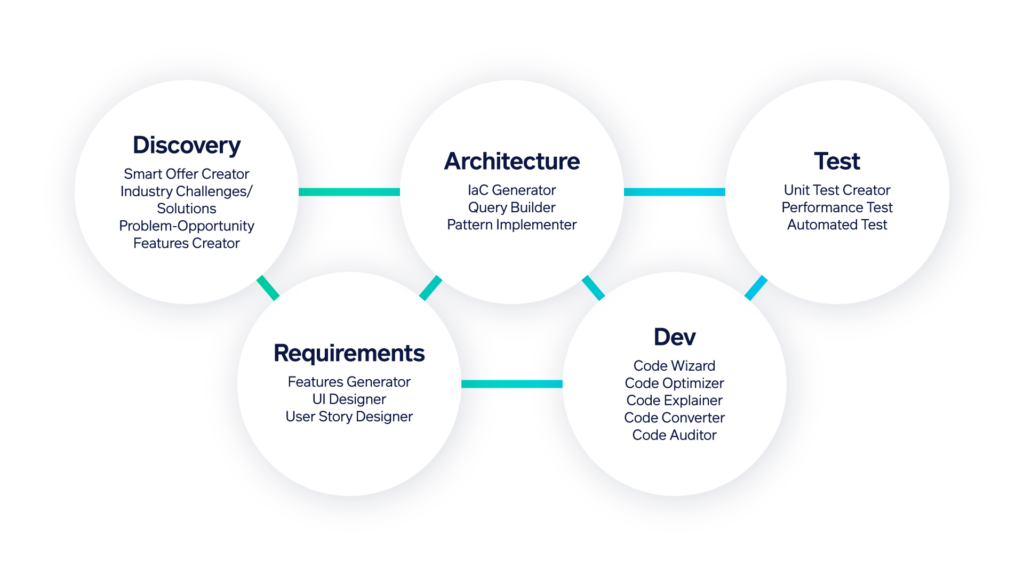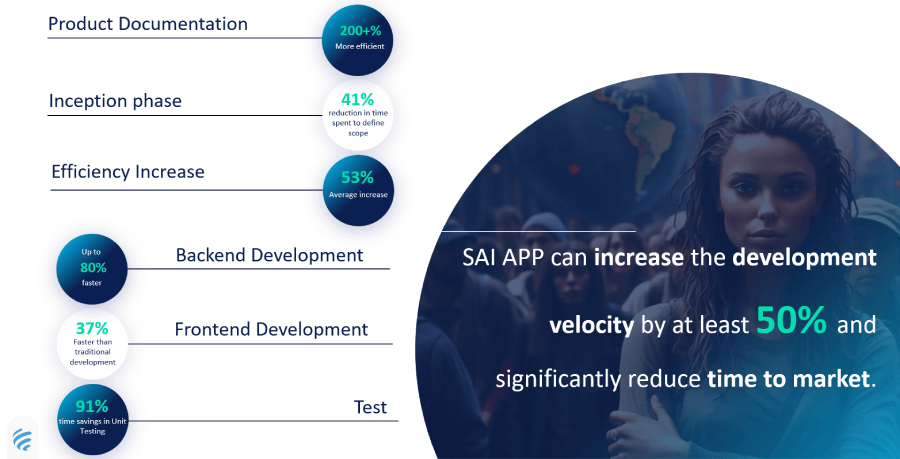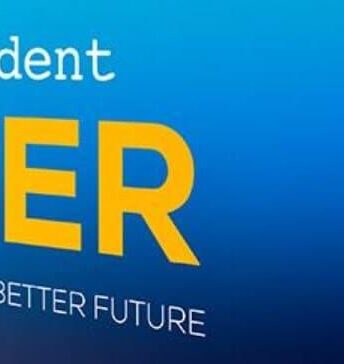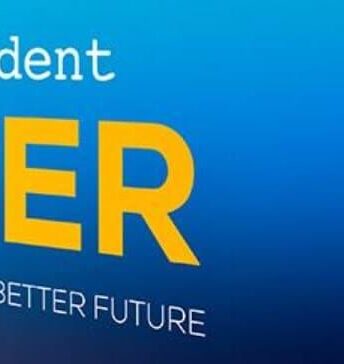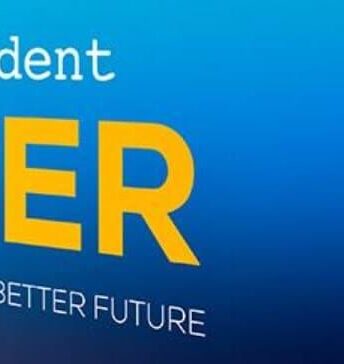In May, Bruno Casillo (Stefanini Business Agility Director) and I had the opportunity to be speakers at the Agile & Beyond event in Detroit, Michigan. The topic we chose focused on how Artificial Intelligence accelerates timelines, increases productivity and contributes to innovation and product strategy for agile teams. Based on Stefanini’s many years of experience with applied AI, we shared how we are leveraging the amazing capabilities and available tools to accelerate and drive business outcomes.
One of my favorite principles from the Agile Manifesto states, “Simplicity – the art of maximizing the amount of work not done – is essential.” Artificial intelligence (AI) has proven itself as an incredibly powerful tool in this area. So, what changes in the day-to-day lives of Product Owners, Scrum Masters, and Developers with the recent advancements in AI? Keep reading to find out.
Discover what Stefanini has achieved with AI.
Stefanini’s Experience with Applied Artificial Intelligence
A pioneer in the development of AI, Stefanini has been co-creating solutions across industries for more than 15 years. From steel giants to automotive multinationals, these companies sought to transform their businesses, making them more intelligent, efficient, and sustainable – and they found the ideal partner with Stefanini.
Product Innovation Opportunities Presented by AI
There are amazing opportunities for Product Innovation that are enabled by AI capabilities. Product Owners and teams should be familiarized with what the technology can do so they understand how it can be incorporated into their products. The table below describes some of these capabilities and their associated innovation opportunities. It was created with generative AI and reviewed by a human.
GEN AI PROMPT: For each artificial intelligence capability in the list below, describe what it is and how it can be used to create new, innovative products and features. Present it in table format.
format.
| Capability | Description | Innovation Opportunities |
| Robotic and Business Process Automation (RPA and BPA) |
Automates repetitive, rule-based tasks (RPA) and entire business processes (BPA). | Automate customer service, streamline back-office operations, manage supply chain logistics. |
| Low-Code
No-Code |
Platforms for creating applications with minimal or no coding using visual interfaces. | Rapid development and deployment of business applications, democratize app development, facilitate quick prototyping. |
| Optical Character Recognition (OCR) | Converts various documents (scanned, PDFs, images, photos, handwriting) into editable and searchable data. | Enhance document management, automate data entry, improve accessibility for screen readers. |
| Unstructured Data Processing | Analyzes and extracts information from unstructured data like text, audio, and video. | Advanced content recommendation systems, customer sentiment analysis, improve search engines. |
| Intelligent Document Processing | Combines OCR and AI to classify, extract, and process data from documents. | Automate invoice processing, streamline insurance claims, enhance regulatory compliance. |
| Hyper Automation | Combines multiple automation technologies to automate complex business processes. | Create autonomous workflows, improve operational efficiencies, integrate disparate systems. |
| Natural Language Processing | Enables machines to understand, interpret, and generate human language. | Develop advanced chatbots and virtual assistants, enhance text analysis tools, create language translation services. |
| Translation | Converts text or speech from one language to another using AI. | Real-time translation tools, multilingual content creation, language learning applications. |
| Chat | AI-powered chatbots that simulate human conversation. | Improve customer service, provide 24/7 support, enhance user engagement on websites and mobile apps. |
| Voice | Voice recognition and synthesis technologies for understanding and generating human speech. | Develop voice-activated devices and applications, enhance accessibility features, create interactive voice response systems. |
| Computer Vision | Enables machines to interpret and make decisions based on visual data. | Advanced surveillance systems, augmented reality experiences, quality control in manufacturing. |
| Predictive Analytics | Uses data, statistical algorithms, and ML to predict future outcomes based on historical data. | Enhance decision-making in finance, healthcare, and marketing, predictive maintenance systems, personalized recommendation engines. |
| Sentiment Analysis | Uses NLP and text analysis to identify and extract subjective information like opinions and emotions. | Monitor brand reputation, analyze customer feedback, improve market research by understanding consumer opinions and trends. |
| Augmented Reality | Overlays digital information onto the real world through devices like smartphones or AR glasses. | Create immersive shopping experiences, enhance education and training, develop interactive marketing campaigns. |
Product Backlog Refinement with Generative AI
In my career as an Agile Coach, I lost count of the amount of time I spent helping Product Owners and Developers identify and define user stories, as well as break down the ones that were too big for their sprints. What I can say is that it happened A LOT. I became better and faster through practice and experience, but now generative AI can do it even better and faster than I can. Let me demonstrate with some examples.
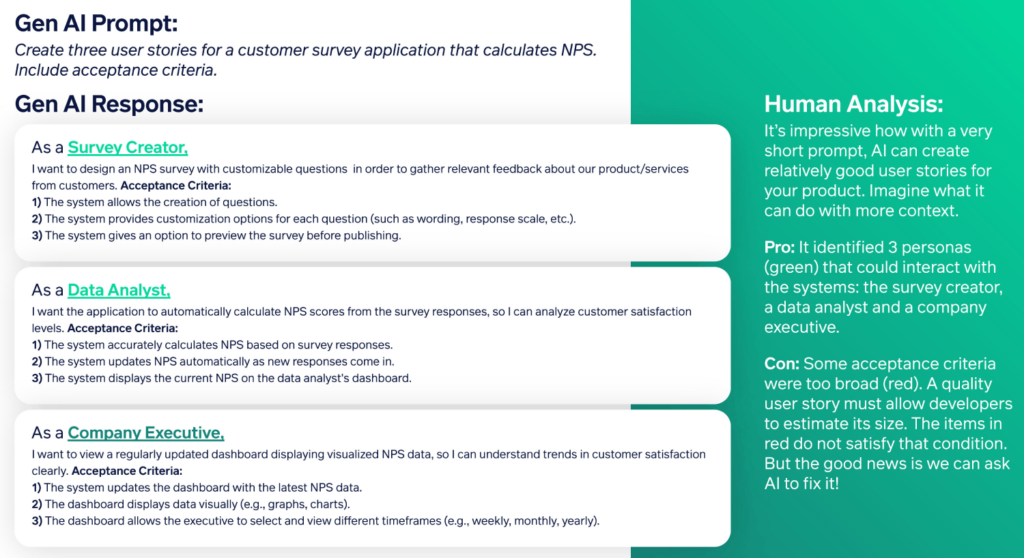
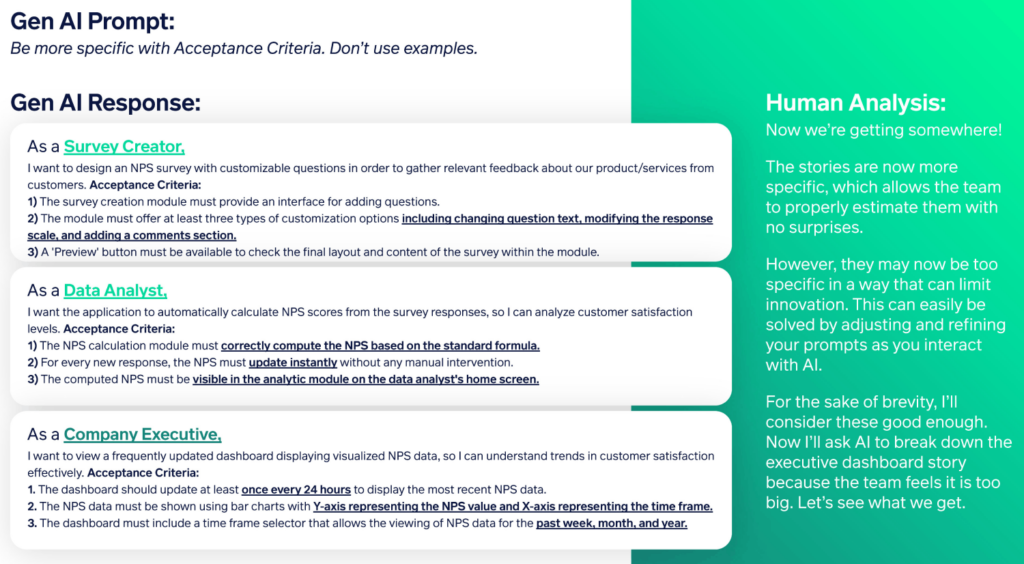
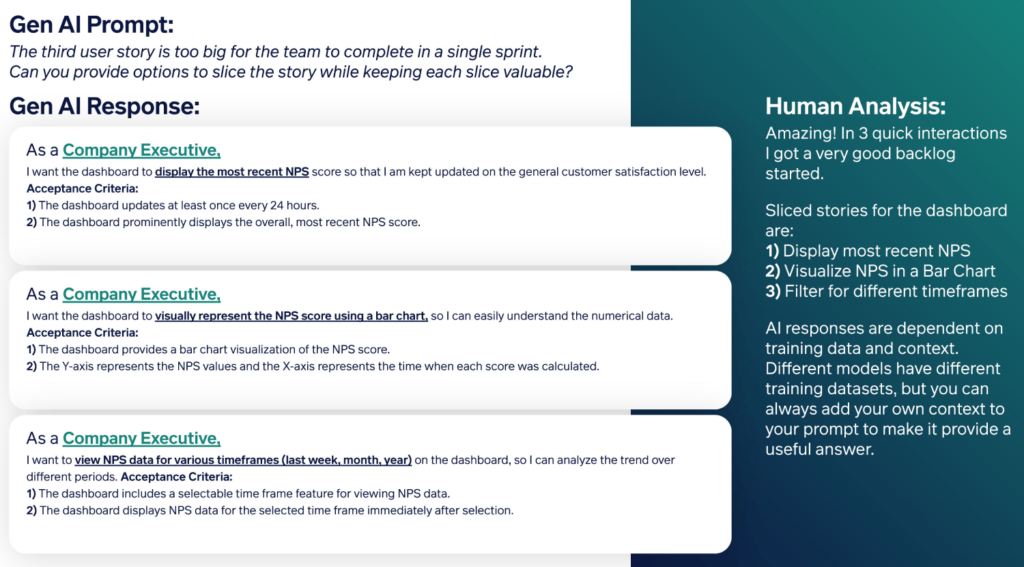
SAI (Stefanini Artificial Intelligence)
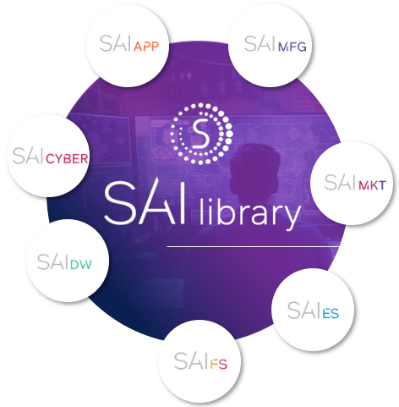
Over the years, Stefanini has developed a comprehensive library of AI tools that accelerate and improve results in many different verticals: Smart Manufacturing, Marketing, Enterprise Services, Field Services, Digital Workplace, Cybersecurity, and Applications.
As you can conclude from the example above, getting good results requires the ability to understand and evaluate the responses, and to prompt AI in a way that gives you what you’re seeking.
SAI library leverages Stefanini’s experience and intellectual property while connecting to leading AI models in the market, providing easy, quality, and flexible tools for workers in all areas.
The Agile Coach’s Best Friend
Generative AI can be used to enhance many day-to-day activities of agile coaches. The table below shows how it has been helping our talent achieve great results.
| Activity | How Stefanini Scrum Masters and Agile Coaches are Using AI |
| Research and Continuous Learning | Accelerate self-learning with quick conceptual overviews and drill down into details in a free conversation. Don’t use it as a single source of knowledge and make sure to double check the information. Results are better for mature concepts that have a lot of public data available. A curated model trained by a specialist improves the results. |
| Generating Options | Quickly produce many options based on a given context. During Team Launch, explore potential Team Names based on agreed set of values. At Sprint Planning, analyze potential Sprint Goals based on selected Sprint Backlog. When Mentoring, create examples and scenarios to help learning. |
| Finding Patterns | Analyze team metrics, backlogs, impediment lists, bug trackers, issues raised in retrospectives, historical release logs, customer feedback and any relevant data you can think of to identify patterns and suggest conclusions. Use is as a facilitator, not as the single source of truth. Results are better when there is a lot of data available. |
| Summarizing and Paraphrasing | Have AI listen to meetings or ingest meeting transcripts to get instant summaries of what was discussed, what were the questions and answers, action items, deadlines and other relevant info. Provide lengthy documents or specifications and ask questions about the content speed up understanding. Generate Planning, Review and Retrospective reports from a digital picture of the whiteboard. These examples help improve shared understanding with clear communication and actionable insights. Results are enhanced with OCR. |
| Training and Mentoring | Work with AI to create individualized and team assessments to help identify opportunities for team upskilling. Build training roadmaps and identify learning resources to go deeper into specific areas. Facilitate self-assessments by having AI generate questions, capture answers and grade the results. |
| Workshop Planning | Inform the workshop goals, duration, participant profiles and your thoughts about how to conduct the session and get ideas of activities, content and agenda breakdowns. |
| Removing Impediments with Automation | Any repetitive, boring, scripted task that the team has to execute is an impediment to be removed. By using and encouraging the team to use automation Scrum Masters can easily and quickly remove a variety of impediments and improve productivity. |
| Citizen Development and Co-Pilots | AI-powered tools guide non-technical team members in developing applications, fostering innovation and democratizing development. Co-pilots can understand requests in plain language and generate automations that are easy to configure through drag and drop. |
Accelerating Development with SAI APP
The most interesting part of our presentation at Agile & Beyond was the live demo of SAI APP, our AI-embedded applications platform. Within this platform, Stefanini has developed thousands of developer tools to support the entire product development lifecycle from inception to operation.
They support reverse engineering documentation from code (including text, visual diagrams and workflows), re-engineering code in different languages for modernization initiatives, front-end and back-end code generation, design patterns implementation, application architecture scaffolding, unit tests, test case and test data generation, automated test creation, identification and correction of code bugs, analyzing performance test results and more. The image below showcases some of these tools:
The next image summarizes some of the results achieved with SAI APP:
Conclusion
Stefanini’s extensive experience and pioneering efforts in applied AI have equipped it with a robust suite of tools and methodologies that not only streamline development processes but also foster continuous learning and innovation. From accelerating product backlog refinement to enhancing the day-to-day activities of agile coaches and enabling the productivity of developers, AI serves as a catalyst for business value delivery.
As we navigate the age of AI, it is imperative for agile teams to remain adaptive, leveraging these advanced technologies to stay competitive. But the journey doesn’t end there – it is a continuous process of learning, iterating, and improving. By embracing AI, agile teams can achieve unprecedented levels of simplicity and efficiency, paving the way for groundbreaking product innovations and superior customer experiences. The future of agile in the age of AI is undoubtedly promising, and those who harness its potential will lead the charge in this transformative era.
If you would like to learn more about SAI, contact us and we’ll schedule a live demonstration!
